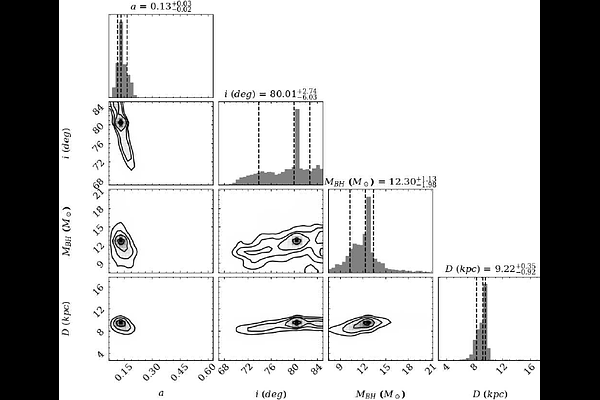Evolution of QPO During Discovery Outburst of MAXI J1834-021: Estimation of Intrinsic Parameters from Spectro-Temporal Study

Evolution of QPO During Discovery Outburst of MAXI J1834-021: Estimation of Intrinsic Parameters from Spectro-Temporal Study
Dipak Debnath, Hsiang-Kuang Chang
AbstractThe Galactic transient black hole candidate (BHC) MAXI~J1834-021 was detected for the first time by MAXI/GSC on February 05, 2023 and it was active for next $\sim 10$~months. A monotonic evolution of low-frequency QPOs from higher to lower frequencies is observed in the middle-phase of the outburst. We study this evolution of the QPO with the propagating oscillatory shock (POS) model, and it suggests the presence of a receding shock. The POS model fit also estimates the mass of the source to be $12.1\pm0.3~M_\odot$. We also study the boradband ($0.5$-$70$~keV) nature of the source using archival data of NICER and NuSTAR on March 10, 2023 with the both phenomenological (combined disk blackbody plus powerlaw) and physical (\textit{nthComp, kerrbb, TCAF}) models. The mass of the BHC estimated by the \texttt{kerbb} and \texttt{TCAF} models is found to be consistent with POS model fits as well as reported in our recent work. Combining all these methods, we predict mass of the source as $12.3^{+1.1}_{-2.0}~M_\odot$. The \texttt{kerbb} model fit also estimates the spin, distance, and inclination of the source to be $0.13^{+0.03}_{-0.02}$, $9.2^{+0.4}_{-0.9}$~kpc, and $80^\circ.0$$^{+2.7}_{-6.0}$, respectively. The combined spectral study suggests harder spectral state of the source with a higher dominance of the sub-Keplerian halo accretion rate over the Keplerian disk rate. The consistency of the observed frequency of the QPO with that of obtained from the \texttt{TCAF} model fitted shock parameters, confirms shock oscillation as the origin of the QPO.